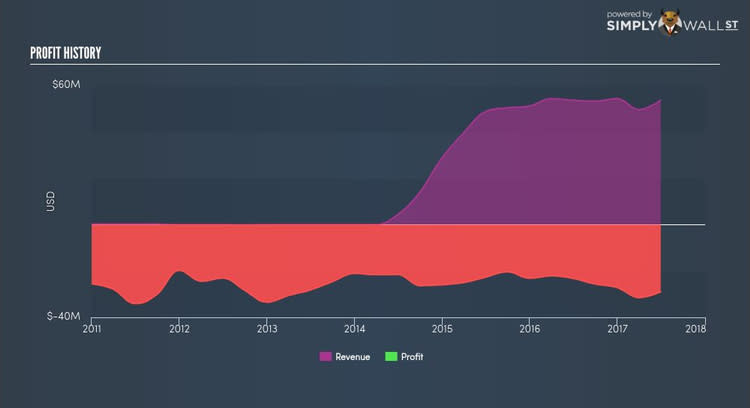Vericel Corporation (VCEL): Risks You Need To Consider Before Buying

For Vericel Corporation’s (NASDAQ:VCEL) shareholders, and also potential investors in the stock, understanding how the stock’s risk and return characteristics can impact your portfolio is important. The beta measures VCEL’s exposure to the wider market risk, which reflects changes in economic and political factors. Not all stocks are expose to the same level of market risk, and the market as a whole represents a beta value of one. A stock with a beta greater than one is expected to exhibit higher volatility resulting from market-wide shocks compared to one with a beta below one.
See our latest analysis for VCEL
What does VCEL's beta value mean?
Vericel’s five-year beta of 3.05 means that the company’s value will swing up by more than the market during prosperous times, but also drop down by more in times of downturns. This level of volatility indicates bigger risk for investors who passively invest in the stock market index. According to this value of beta, VCEL may be a stock for investors with a portfolio mainly made up of low-beta stocks. This is because during times of bullish sentiment, you can reap more of the upside with high-beta stocks compared to muted movements of low-beta holdings.
How does VCEL's size and industry impact its risk?
VCEL, with its market capitalisation of USD $192.02M, is a small-cap stock, which generally have higher beta than similar companies of larger size. Conversely, the company operates in the biotechnology industry, which has been found to have low sensitivity to market-wide shocks. As a result, we should expect a high beta for the small-cap VCEL but a low beta for the biotechnology industry. It seems as though there is an inconsistency in risks from VCEL’s size and industry. A potential driver of this variance can be a fundamental factor, which we will take a look at next.
Can VCEL's asset-composition point to a higher beta?
During times of economic downturn, low demand may cause companies to readjust production of their goods and services. It is more difficult for companies to lower their cost, if the majority of these costs are generated by fixed assets. Therefore, this is a type of risk which is associated with higher beta. I test VCEL’s ratio of fixed assets to total assets in order to determine how high the risk is associated with this type of constraint. Since VCEL’s fixed assets are only 18.20% of its total assets, it doesn’t depend heavily on a high level of these rigid and costly assets to operate its business. Thus, we can expect VCEL to be more stable in the face of market movements, relative to its peers of similar size but with a higher portion of fixed assets on their books. However, this is the opposite to what VCEL’s actual beta value suggests, which is higher stock volatility relative to the market.
What this means for you:
Are you a shareholder? You may reap the gains of VCEL's returns during times of economic growth by holding the stock. Its low fixed cost also implies that it has the flexibility to adjust its cost to preserve margins during times of a downturn. I recommend analysing the stock in terms of your current portfolio composition before deciding to invest more into VCEL.
Are you a potential investor? Before you buy VCEL, you should take into account how their portfolio currently moves with the market, in addition to the current economic environment. VCEL may be a valuable addition to portfolios during times of economic growth, and it may be work looking further into fundamental factors such as current valuation and financial health.
Beta is one aspect of your portfolio construction to consider when holding or entering into a stock. But it is certainly not the only factor. Take a look at our most recent infographic report on Vericel for a more in-depth analysis of the stock to help you make a well-informed investment decision. But if you are not interested in Vericel anymore, you can use our free platform to see my list of over 50 other stocks with a high growth potential.
To help readers see pass the short term volatility of the financial market, we aim to bring you a long-term focused research analysis purely driven by fundamental data. Note that our analysis does not factor in the latest price sensitive company announcements.
The author is an independent contributor and at the time of publication had no position in the stocks mentioned.

